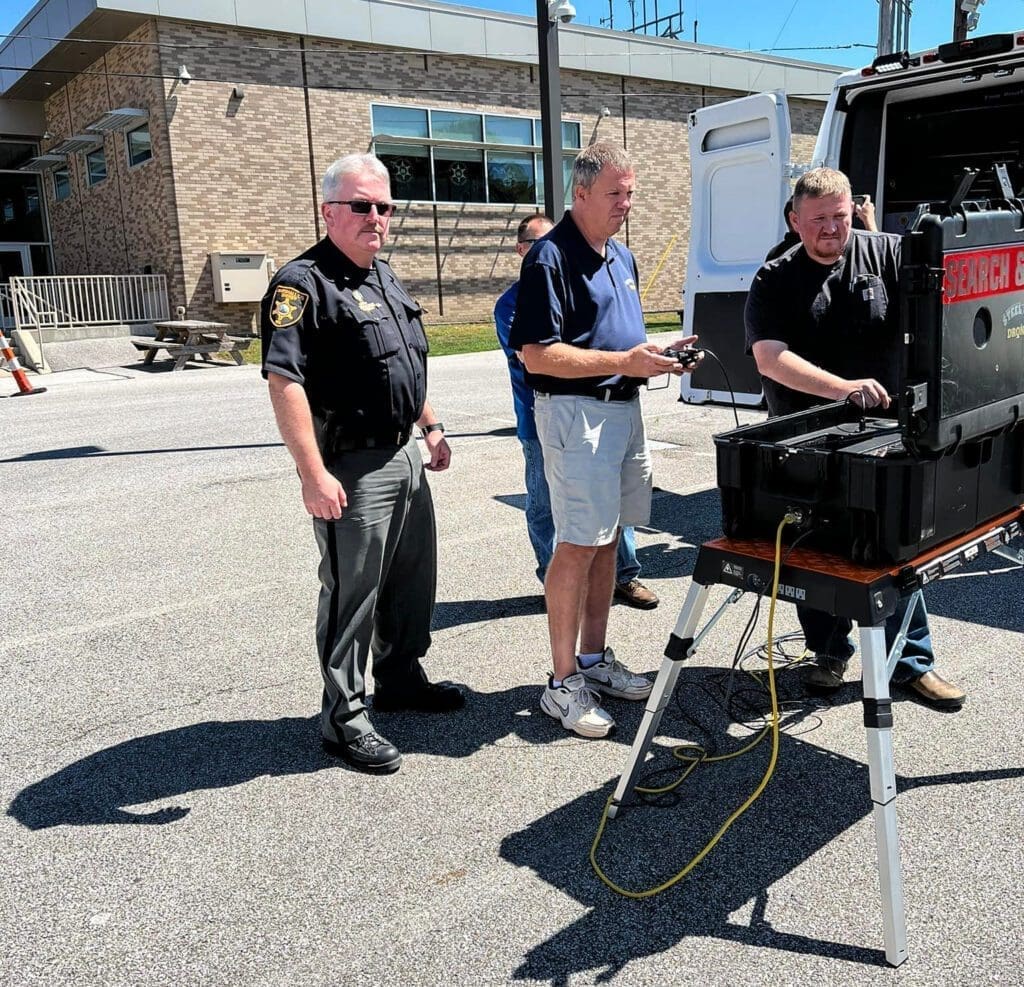
The year was 1994.
Boyz II Men was the big band, “Forrest Gump” made its worldwide premier, and the Buffalo Bills lost the Super Bowl for a fourth straight time. O.J. Simpson led police on a low-speed chase, big-league baseball players went on strike, Bill Cinton was the president of the United States, and marijuana was the evil weed because parents watch TV commercials with their children’s brains frying in a pan.
It is also the year when Bill Helms became a cop. He was 24, heard about the Civil Service Exam, and took the test with about 200 other men. Helms then signed up with the Moundsville Police Department.
“That’s back when we didn’t have the internet yet,” Helms recalled. “Can you imagine a world without Google and Facebook?”
Or a world without Fentanyl and Narcan?
“When I first started in law enforcement, marijuana was the big drug on the streets and it was the drug we were looking for all of the time. These days, marijuana is nothing compared to the drugs we have on the streets now. The drugs we have now can kill you instantly, and that’s never, ever been the case with marijuana,” Helms said. “I never expected the drug trade to reach the point it has these days.
“That makes it very scary to think about where it might go in the near future,” he said. “I’d love to see it all go away but that’s never going to happen in my lifetime.”
Where it is now, though, is frightening enough.
“I have deputy sheriffs who carry Narcan on their belt, and that’s definitely something we weren’t doing when I first started back in mid-90s,” Helms said. “They do that in case they have to save someone’s life because of an overdose, or because they accidentally got a dose while doing an arrest. That has happened with Fentanyl on the street.
“The danger now is so strong and the drugs are really, really intense now, and with Fentanyl, it only takes a whiff of it,” he explained. “And if you do get a whiff of Fentanyl? You could die. It’s that easy to understand. You could die, and if you don’t have the Narcan close by, you probably will.”

In With the New?
One invention was nicknamed the “Electric Rifle” because instead of bullets it shot less-lethal electrodes to stop fleeing or resisting suspects. It is, of course, has been known as the “Taser” since deployed in the 1990s, and it’s been a tool for law enforcement across the world.
The electroshock weapon incapacitates people when necessary, and Helms reported that Tasers are rarely deployed by deputies in Marshall County.
“When tasers became a part of law enforcement, that was a big-time game changer for law enforcement because it meant we weren’t going to have to fight with people as often,” Helms said. “Before tasers, we had to fight with people a lot because so many of them would resist. We would say, ‘OK, you’re under arrest. Turn around and put your hands on your head,’ and they would say, ‘Make me.’
“So, yeah, we would have to make them, and it was never a fun thing to do,” he said. “But with the tasers, that turned around almost by 100 percent because no one wants to be tasered, trust me. Pepper spray helped, but the tasers made the most difference. People are afraid of those things, and they should be.”
Another invention that came into play was the in-cruiser camera, but its implementation was not made without an angry narrative between government officials and law enforcement leaders.
The police opposed the cameras, Helms recalled, because it felt too “Big Brother” to officers who felt they were the ones under surveillance instead of the criminals.
“I remember when the in-car cameras came into play, there were actual VCRs in our trunks. That was really, really weird,” Helms said. “And the people in law enforcement were averse to those things because it seemed like it was infringing upon us somehow, but we sure changed our minds about that once the results started coming in that we did the right thing, and the people we were arresting were really doing those things no one believed us about.
“Nowadays, we wouldn’t go out there with those cameras because of how much they protect us while we’re on duty,” he insisted. “Those cameras were the beginning of the technology we started seeing come into law enforcement, and it’s all been very, very positive.”

Lost and Found
Not until recently did mainstream websites and smartphone app companies have to start asking users for their approval to “track” their locations. The practice, however, was perfectly legal before new laws were established following lawsuits and court battles.
The smartphone, though, never stops recording a person’s position because of the need for a signal from a nearby cellular tower. Many individuals have exclaimed such practice to be an infringement on privacy, but it is that exact system that aids law enforcement in various ways.
“One of the first things we do when we launch an investigation is ping the connected phones,” Helms said. “When a young person goes missing, that’s the first we do is ping their phone because of how many steps it allows us to skip when it comes to things we used to do. Now, there are several things we’ll always have to do in those situations, but, again, technology has changed so much when it comes to law enforcement.
“Our phone never stops tracking us unless they are completely without power,” the sheriff said. “Of course, there are always the negatives with the positives, and what that means is that we’ve seen criminals using technology, too.”
Once a location allegedly connected to criminal activity is determined, Helms deploys the department’s new drone for surveillance purposes. The results, the sheriff confirmed, have made the purchase well worth the $45,000 expense.
“We added a drone to our department a few months ago, and wow, is it amazing, and it really can help with so much that we do. We’ve used it for reconnaissance, with high-risk warrants, and missing persons cases,” Helms explained. “It is night-vision capable, the resolution on the camera is incredible, and the range is much farther than I thought it would be. When it was demonstrated for me, I found it to be a must-tool our department needed immediately.
“Our drone can fly so high, you can’t even see it from the ground,” he said. “Let me put it this – our drone was expensive, it really was, but it’s already paid for itself.”

